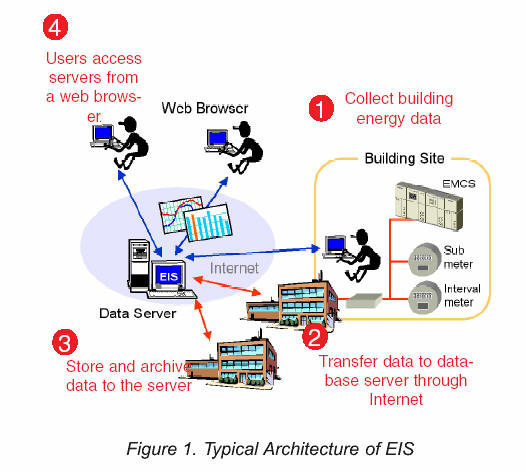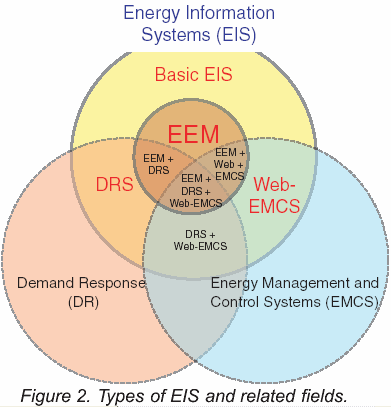February 2005
![]()
AutomatedBuildings.com
[an error occurred while processing this directive]
(Click Message to Learn More)
February 2005 |
[an error occurred while processing this directive] |
|
ENERGY INFORMATION SYSTEMS AND DIAGNOSTIC TOOLS |
Ken Sinclair |
The following information was extracted from a pdf on a very useful public web site.
High Performance Commercial Building Systems "HPCBS" Web Site
http://buildings.lbl.gov/hpcbs/
Although dated, much
useful information and overview of web-based demand response is contained
within.
|
http://buildings.lbl.gov/hpcbs/pubs/EIS-brochure.pdf
|
|
|
|
|
|
|
|
|
|
|
|
|
|
|
|
|
|
|
|
|
|
|
[an error occurred while processing this directive] |
Energy Information Systems and Diagnostic Tools
Energy
Information Systems and Diagnostic Tools are emerging technologies to help
monitor and evaluate building performance.
Energy
Information Systems combine software, data acquisition hardware, and
communications systems to collect, analyze, and display building
information to aid managers and utilities in reducing energy use and costs.
Typical architecture is shown in Figure 1.
Diagnostic
tools help with
data collection
visualization, and
analysis, for continuous assessment of building performance.

Guides for Web-Based EIS and Emerging Diagnostic Tools.
Berkeley Lab created two guides that compare, evaluate, and classify EIS and diagnostic tools and techniques. Web-Based Energy Information Systems for Energy Management and Demand Response and a Comparative Guide to Emerging Diagnostic Tools for Large Commercial HVAC Systems are now available. The EIS Guide provides a technical overview of currently available EIS products. It summarizes key features in todays EIS, along with a categorization framework to understand the relationships among EIS, Energy Management and Control Systems (EMCS), Demand Response (DR), and similar technologies (Figure 2).

Who Benefits?
The main purposes of the Guides are to:
[an error occurred while processing this directive]
Help potential tool users gain an understanding of this new technology, EIS,
and key diagnostic capabilities that affect tool implementation with EMCS data
Provide tool developers with feedback by identifying important features and
needs for future research.
Effective
use of energy information systems and diagnostic tools can:
Reduce building energy consumption and cost by 5 to 20% or more
Lower operations and maintenance costs
Improve occupant comfort
Better indoor environmental quality
More information is part
of this pdf including the following links so be sure download it.
http://buildings.lbl.gov/hpcbs/pubs/LBNL-48629.pdf
http://buildings.lbl.gov/hpcbs/pubs/E5P2T1b5_LBNL52510.pdf
The site is funded by http://www.energy.ca.gov/pier/
The California Energy Commission's Public Interest Energy Research (PIER) Program supports energy research, development and demonstration (RD&D) projects that will help improve the quality of life in California by bringing environmentally safe, affordable and reliable energy services and products to the marketplace.
[an error occurred while processing this directive]
[Click Banner To Learn More]
[Home Page] [The Automator] [About] [Subscribe ] [Contact Us]